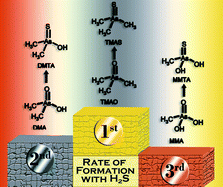Investigation of the pH effects on the formation of methylated thio-arsenicals, and the effects of pH and temperature on their stability†
Abstract
Thio-arsenicals have been discovered in both

* Corresponding authors
a
U.S. Environmental Protection Agency, Office of Research and Development, National Exposure Research Laboratory, Microbiological and Chemical Exposure Assessment Research Division, 26 W. Martin Luther King Drive, Cincinnati, USA
E-mail:
creed.jack@epamail.epa.gov
Fax: +1 513-569-7757
Tel: +1 513-569-7617
Thio-arsenicals have been discovered in both

 Please wait while we load your content...
Something went wrong. Try again?
Please wait while we load your content...
Something went wrong. Try again?
S. D. Conklin, M. W. Fricke, P. A. Creed and J. T. Creed, J. Anal. At. Spectrom., 2008, 23, 711 DOI: 10.1039/B713145C
To request permission to reproduce material from this article, please go to the Copyright Clearance Center request page.
If you are an author contributing to an RSC publication, you do not need to request permission provided correct acknowledgement is given.
If you are the author of this article, you do not need to request permission to reproduce figures and diagrams provided correct acknowledgement is given. If you want to reproduce the whole article in a third-party publication (excluding your thesis/dissertation for which permission is not required) please go to the Copyright Clearance Center request page.
Read more about how to correctly acknowledge RSC content.
 Fetching data from CrossRef.
Fetching data from CrossRef.
This may take some time to load.
Loading related content
